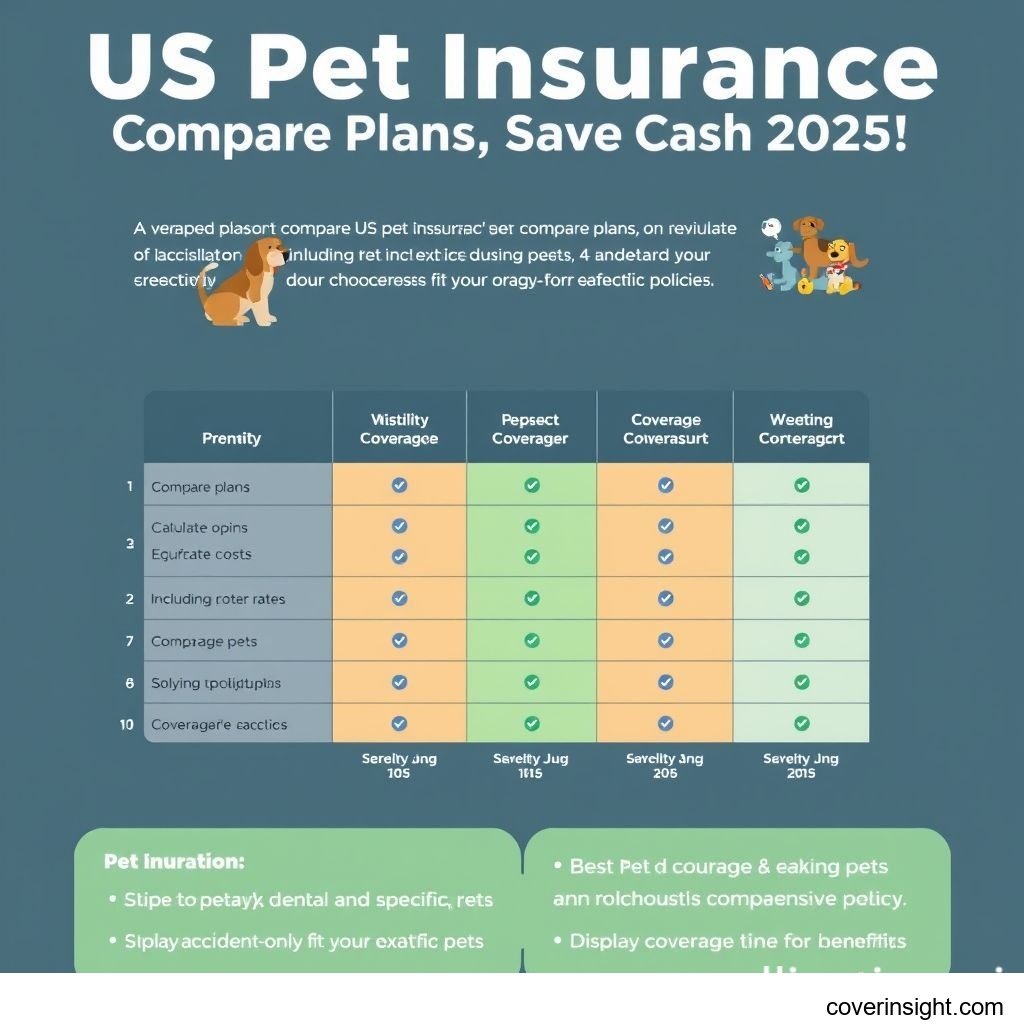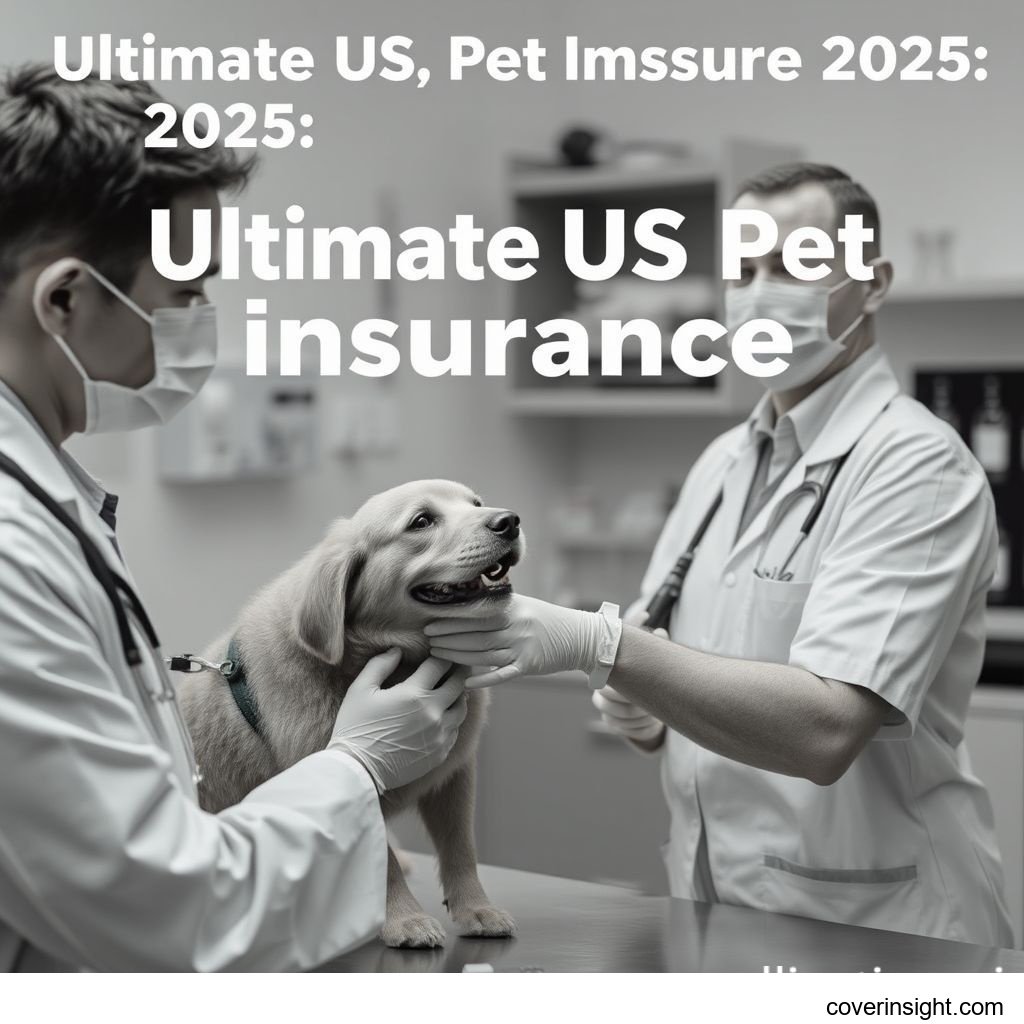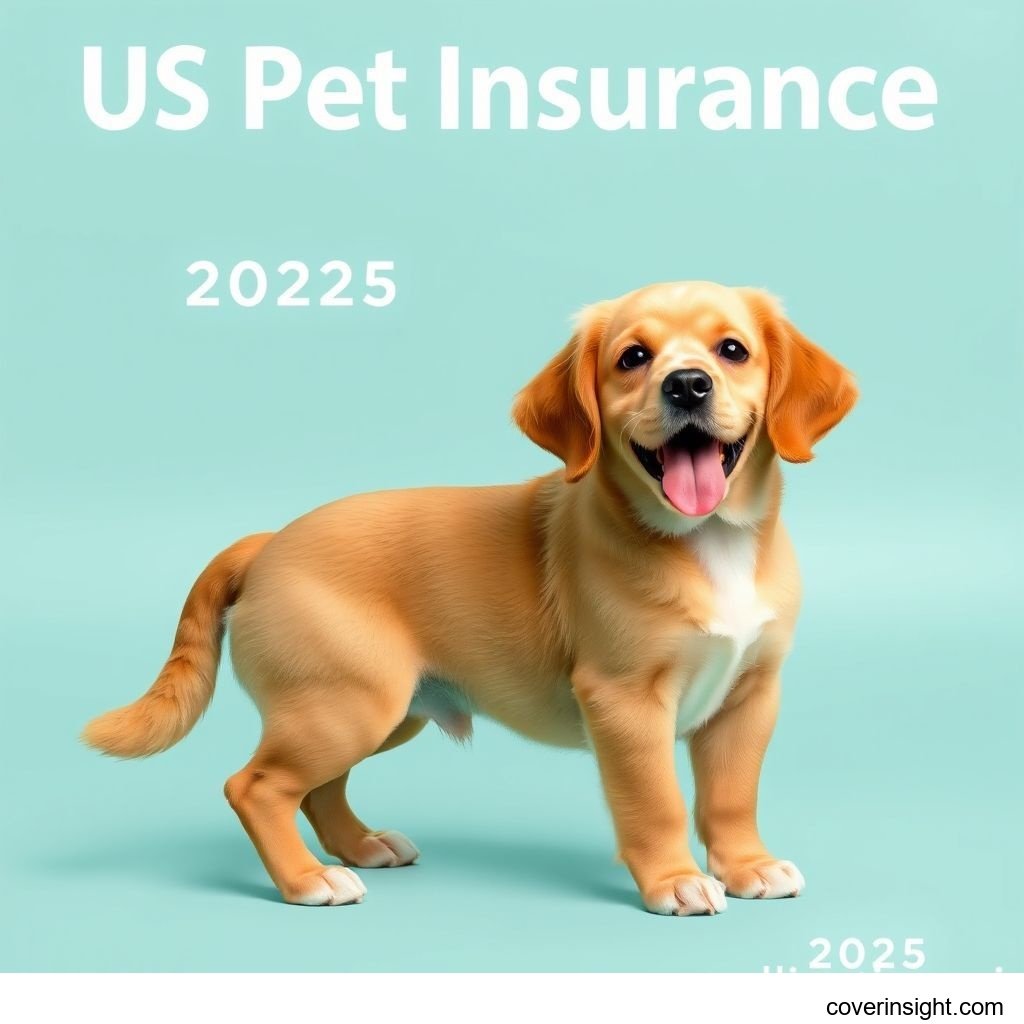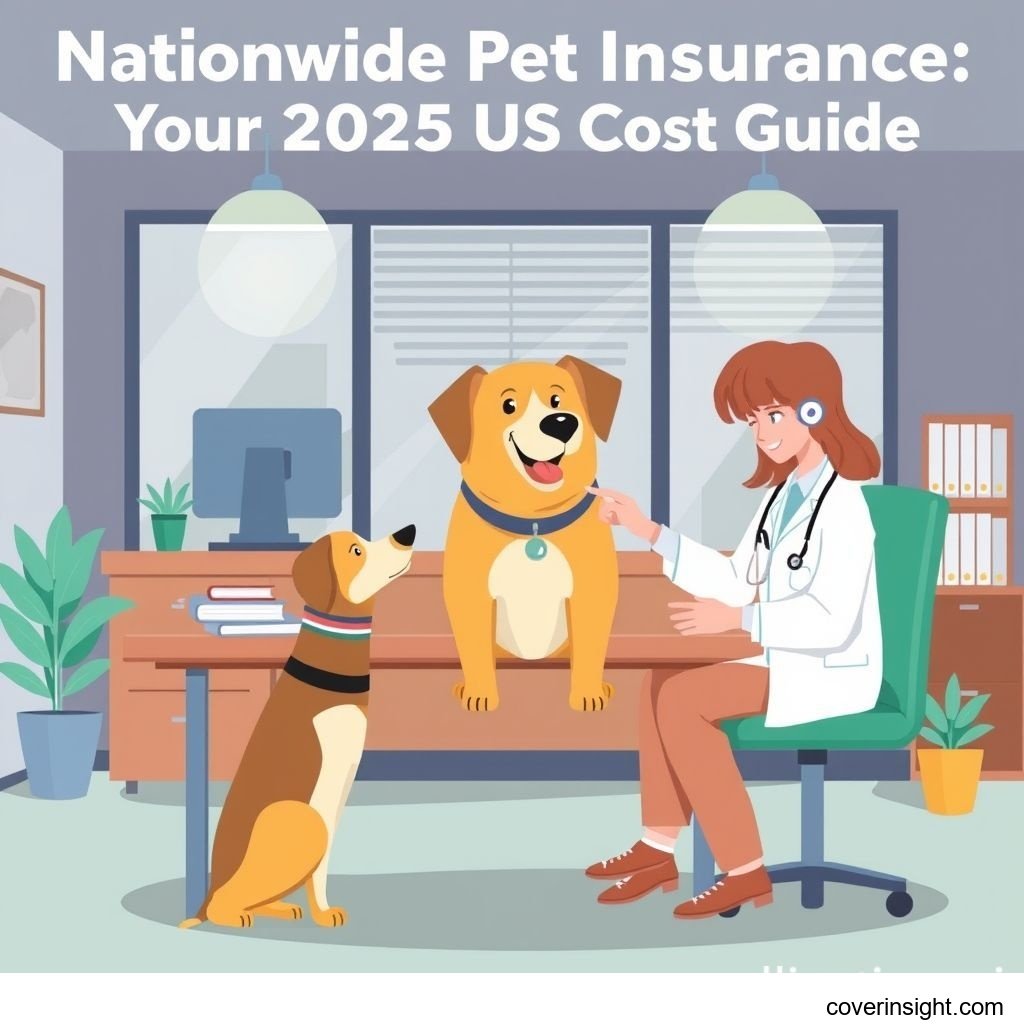Introduction
As pet ownership continues to rise across the United States, so does the awareness of managing veterinary costs. Unexpected accidents or illnesses can lead to thousands of dollars in bills, placing a significant financial strain on pet parents. This is where pet insurance becomes an invaluable tool, offering a safety net for your beloved companions. To navigate the complex landscape of available policies and find the best fit for your furry friend in 2025, understanding and utilizing a comprehensive pet insurance comparison chart is absolutely essential. This guide will help you understand the nuances of various plans, ensuring you can make an informed decision to protect your pet and your wallet.
Coverage Details: Understanding Your Pet Insurance Comparison Chart
When examining a pet insurance comparison chart, the first and most crucial element to dissect is the coverage itself. Policies vary widely, and what's included or excluded can significantly impact your out-of-pocket expenses.
What’s Included in Pet Insurance Plans
Most standard pet insurance policies focus on accident and illness coverage, which forms the backbone of financial protection. A typical pet insurance comparison chart will highlight these common inclusions:
-
Accidents: Injuries from incidents like broken bones, foreign body ingestion, snake bites, or car accidents.
-
Illnesses: Conditions such as infections, allergies, digestive issues, cancer, diabetes, and heart disease.
-
Emergency Care: Coverage for unexpected, life-threatening situations requiring immediate veterinary attention.
-
Hospitalization & Surgery: Costs associated with overnight stays, surgical procedures, and related medical care.
-
Prescription Medications: Drugs prescribed by a veterinarian for covered conditions.
-
Diagnostic Tests: X-rays, ultrasounds, MRI/CT scans, blood tests, and lab work used to diagnose illnesses or injuries.
-
Specialist Care: Referrals to veterinary specialists like cardiologists, oncologists, or dermatologists.
-
Behavioral Therapy: In some plans, consultations for treatable behavioral issues.
Some advanced plans may also offer wellness or routine care add-ons, covering things like vaccinations, routine check-ups, and flea/tick prevention.
Common Exclusions in Pet Insurance Policies
Just as important as knowing what's covered is understanding what typically isn't. Scrutinizing the exclusions on any pet insurance comparison chart will prevent unwelcome surprises:
-
Pre-existing Conditions: Any illness or injury that showed symptoms or was diagnosed before the policy effective date or end of the waiting period. This is the most common exclusion.
-
Cosmetic Procedures: Elective surgeries such as tail docking, ear cropping, or declawing.
-
Breeding & Whelping: Costs related to pregnancy, birth, or breeding.
-
Experimental Treatments: Procedures or medications that are not widely accepted by the veterinary community.
-
Routine Grooming: Services like nail trims or regular bathing.
-
Supplements or Non-Prescription Foods: Unless medically necessary and prescribed for a covered condition.
-
Preventable Illnesses: In some rare cases, conditions that could have been prevented by vaccinations if the owner neglected routine care.
Always read the fine print in the policy document itself, not just summary charts, to fully grasp these limitations.
Cost Analysis: Navigating Your Pet Insurance Comparison Chart
The price of pet insurance can fluctuate significantly based on multiple factors. A pet insurance comparison chart for 2025 will give you a snapshot of potential costs, but understanding the underlying variables is key to finding an affordable plan.
Price Factors Affecting Premiums
Several key elements influence how much you'll pay for pet insurance:
-
Pet's Age: Older pets generally have higher premiums due to an increased likelihood of developing age-related illnesses. Puppies and kittens are also slightly more expensive due to higher accident risk.
-
Breed: Certain breeds are predisposed to specific health conditions (e.g., hip dysplasia in large breeds, breathing issues in brachycephalic breeds), leading to higher rates.
-
Location: Veterinary care costs vary by region, so premiums in high-cost-of-living areas (like major cities) tend to be higher.
-
Deductible: This is the amount you pay out-of-pocket before your insurance begins to reimburse you. A higher deductible typically results in a lower monthly premium.
-
Reimbursement Percentage: The percentage of covered veterinary bills that the insurer pays after the deductible is met (e.g., 70%, 80%, 90%). A higher reimbursement rate means higher premiums.
-
Annual Limit: The maximum amount an insurer will pay out in a policy year. Plans with higher annual limits usually cost more.
-
Type of Coverage: Accident-only plans are cheaper, while comprehensive accident and illness plans, especially those with added chronic condition coverage, are more expensive.
Saving Tips While Using a Pet Insurance Comparison Chart
Even with varying factors, there are smart ways to reduce your pet insurance costs without sacrificing essential protection. When reviewing a pet insurance comparison chart, consider these strategies:
-
Enroll Early: Insuring your pet when they are young and healthy means lower premiums and fewer pre-existing condition exclusions later on.
-
Choose a Higher Deductible: If you have an emergency fund, opting for a higher deductible can significantly lower your monthly premium.
-
Select a Lower Reimbursement Percentage: While this means you pay more out of pocket, it will decrease your premium.
-
Opt for an Annual Limit that Fits Your Budget: Don't necessarily choose the highest limit if it’s beyond your financial comfort zone.
-
Multi-Pet Discounts: Many insurers offer discounts if you enroll multiple pets under the same policy.
-
Bundle Policies: Some providers offer discounts if you bundle pet insurance with other insurance products you already have (e.g., home or auto).
-
Look for Wellness Plan Add-ons: While they increase the premium, they can save money on routine care if you regularly utilize veterinary services for vaccinations, check-ups, and dental care pet insurance treatments.
-
Compare Quotes Annually: The pet insurance market is dynamic. Use a pet insurance comparison chart yearly to ensure you’re still getting the best deal.
For more generalized insurance insights, you can explore resources on Insurance Resources Global.
Choosing the Right Pet Insurance Comparison Chart for Informed Decisions
Selecting the ideal pet insurance policy isn't just about the lowest premium; it's about finding the best value that aligns with your pet's specific needs and your financial situation. A detailed pet insurance comparison chart empowers you to make an educated choice.
Assessing Your Pet's Specific Needs
Before diving into a pet insurance comparison chart, take stock of your pet's unique profile:
-
Breed-Specific Risks: Research common health issues for your pet's breed. For instance, large breeds might benefit from plans with higher orthopedic coverage, while some purebreds might need robust chronic condition coverage.
-
Age and Health Status: A young, healthy pet may need less extensive coverage than an older pet with a history of minor ailments.
-
Lifestyle: An indoor cat typically faces fewer accident risks than an adventurous outdoor dog.
-
Current Veterinary Costs: Consider your average annual vet expenses. If they are consistently low, a high-deductible plan might be suitable.
Understanding Policy Terms: Beyond the Basics
Delve deeper than just the premium when reviewing your pet insurance comparison chart:
-
Waiting Periods: All policies have waiting periods (e.g., 2 days for accidents, 14 days for illnesses, longer for orthopedic issues). Ensure these timelines fit your expectations.
-
Per-Incident vs. Annual Deductible: Understand if your deductible applies once per condition or once per policy year. An annual deductible is generally more favorable.
-
Benefit Schedules vs. Reimbursement Percentage: Some older plans use benefit schedules (fixed amounts per condition), while most modern plans use a reimbursement percentage of actual vet bills. The latter offers more comprehensive coverage.
-
Customer Service and Claims Process: Research reviews on how quickly and efficiently companies process claims. A smooth claims process can save you headaches.
Utilizing a comprehensive pet insurance comparison chart helps you weigh these factors side-by-side across multiple providers.
Beyond Standard Coverage: Addressing Specific Needs
Many pet owners find that standard accident and illness plans don't fully meet their needs, especially when dealing with long-term health issues or preventative care. Expanding your focus on a pet insurance comparison chart to include specialized options can be highly beneficial.
The Importance of Chronic Condition Coverage
For many pets, health issues aren't one-off events. Chronic condition coverage is crucial for managing ongoing illnesses that require continuous medication, special diets, or regular veterinary visits. Examples include:
-
Diabetes: Requiring daily insulin and blood glucose monitoring.
-
Arthritis: Managing pain with medication and therapies.
-
Allergies: Requiring ongoing medication or specialized diets.
-
Thyroid Conditions: Needing lifelong medication.
When reviewing a pet insurance comparison chart, specifically look for how each plan addresses chronic conditions. Some plans might only cover the initial diagnosis and a limited number of treatments, while others offer lifetime coverage for recurring issues, as long as the condition wasn't pre-existing before enrollment. This distinction is vital for long-term peace of mind and financial stability.
Exploring Dental Care Pet Insurance Options
Dental health is often overlooked but is critical to a pet's overall well-being. Periodontal disease is rampant in pets over three years old, leading to pain, tooth loss, and even systemic health problems. While some dental care pet insurance is included in comprehensive plans, it's often limited.
Typically, dental care pet insurance within accident/illness plans covers:
-
Accidental Dental Injuries: Fractured teeth from trauma.
-
Illness-Related Dental Issues: Infections or diseases of the gums and teeth requiring extraction.
However, routine cleanings and preventative care are usually part of a separate wellness add-on or a dedicated dental plan. When using a pet insurance comparison chart, evaluate:
-
Coverage for Annual Cleanings: Is there a specific benefit amount for professional dental cleanings?
-
Anesthesia Coverage: Dental procedures often require anesthesia, which can be expensive.
-
Exclusions: Does the plan exclude pre-existing dental conditions or purely cosmetic procedures?
Investing in proper dental care pet insurance or a robust wellness plan can prevent more serious, expensive issues down the line. You can learn more about general insurance products and how they function on the US Insurance Home page.
Wellness Plans vs. Accident/Illness Policies
It’s important to distinguish between the core accident/illness coverage and optional wellness plans.
-
Accident/Illness Policies: These are designed for unexpected, high-cost events. They act like major medical insurance for humans.
-
Wellness Plans: These are typically add-ons or separate plans that cover routine preventative care. They function more like a budget tool, helping spread out the cost of expected veterinary visits.
While a pet insurance comparison chart might list wellness options, remember they primarily help manage routine expenses, not necessarily catastrophic ones. For a comprehensive overview of financial protection, you might find parallels in human health insurance information, such as on Healthcare.gov.
FAQs: Your Pet Insurance Comparison Chart Questions Answered
Many questions arise when considering pet insurance. Here are answers to some of the most common queries, providing clarity to your pet insurance comparison chart review process.
1. How much does pet insurance comparison chart cost?
The cost varies widely based on numerous factors like your pet's age, breed, location, and the specifics of the plan (deductible, reimbursement rate, annual limit). On average, monthly premiums can range from $25-$70 for dogs and $15-$40 for cats for comprehensive accident and illness plans. Utilizing a pet insurance comparison chart is the best way to get real-time, personalized quotes for your pet.
2. What affects pet insurance premiums?
Premiums are primarily affected by:
-
Pet's age: Older pets are more expensive to insure.
-
Breed: Breeds prone to genetic conditions cost more.
-
Location: Veterinary costs differ regionally.
-
Coverage choices: Higher deductibles lower premiums, while higher reimbursement rates and annual limits increase them.
-
Specific add-ons: Features like chronic condition coverage or dental care pet insurance will add to the premium.
3. Is pet insurance mandatory?
No, pet insurance is not mandatory in the United States, unlike auto insurance or, in some cases, health insurance for humans. It is a voluntary financial tool designed to help pet owners manage unexpected veterinary expenses. However, many consider it a vital investment for their pet's health and their own financial peace of mind. For insights into state-specific regulations, the National Association of Insurance Commissioners is an excellent resource.
4. How to choose the best plan using a pet insurance comparison chart?
To choose the best plan, use a pet insurance comparison chart to:
-
Assess your pet's needs: Consider age, breed-specific risks, and lifestyle.
-
Determine your budget: Decide how much you can comfortably afford monthly.
-
Compare deductibles, reimbursement rates, and annual limits: Find the balance that fits your financial comfort zone.
-
Review exclusions and waiting periods: Ensure you understand what isn't covered and for how long.
-
Read customer reviews: Check for ease of claims process and customer service quality.
-
Consider add-ons: Decide if you need wellness plans or enhanced dental care pet insurance.
5. What are the consequences of no pet insurance coverage?
Without pet insurance, you are solely responsible for 100% of your pet's veterinary bills. This can lead to:
-
Significant financial strain: Unexpected bills (e.g., $5,000 for a broken leg) can deplete savings or force difficult decisions.
-
Debt: Many pet owners resort to credit cards or loans to cover emergency treatments.
-
Difficult choices: In extreme cases, owners might face the heartbreaking decision of economic euthanasia if they cannot afford life-saving treatment.
Researching state-specific regulations or insurance options is always a good idea, and you can often find state-specific information via the State Insurance Departments. A well-utilized pet insurance comparison chart can prevent these scenarios by providing a financial safety net.











Comments